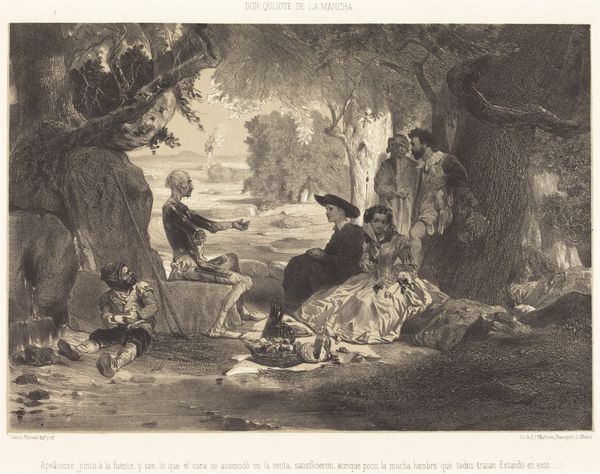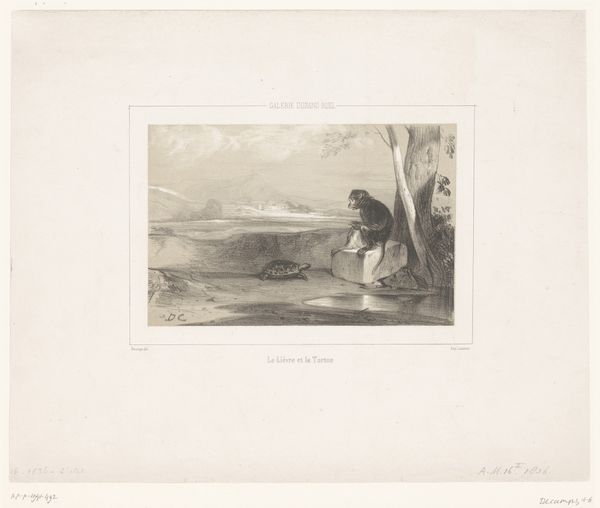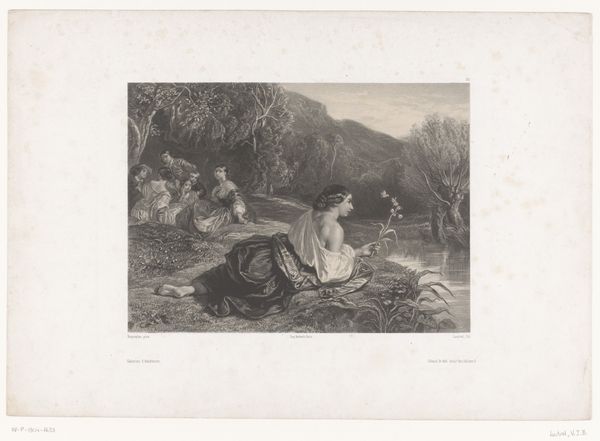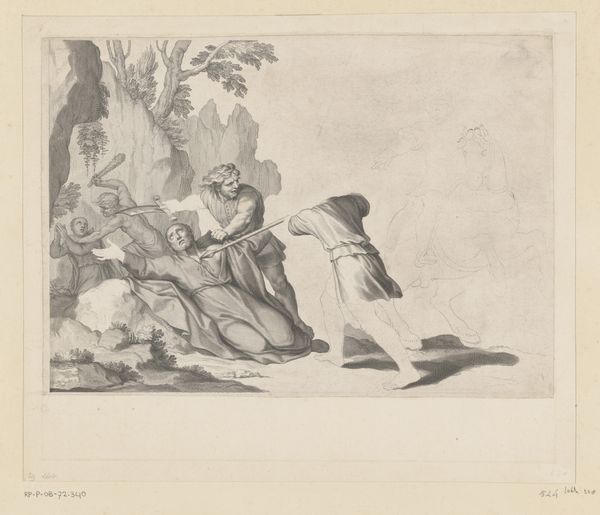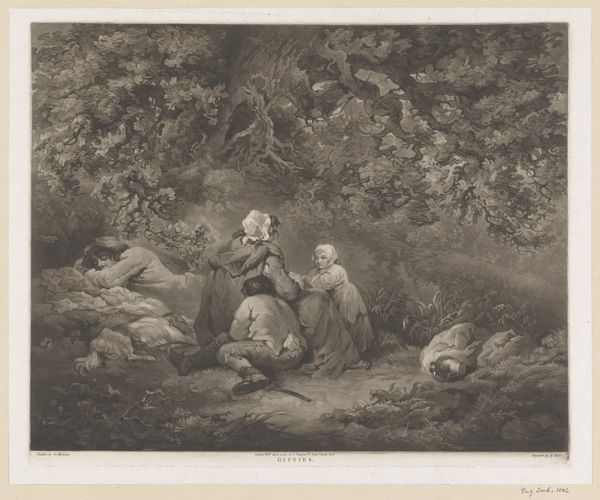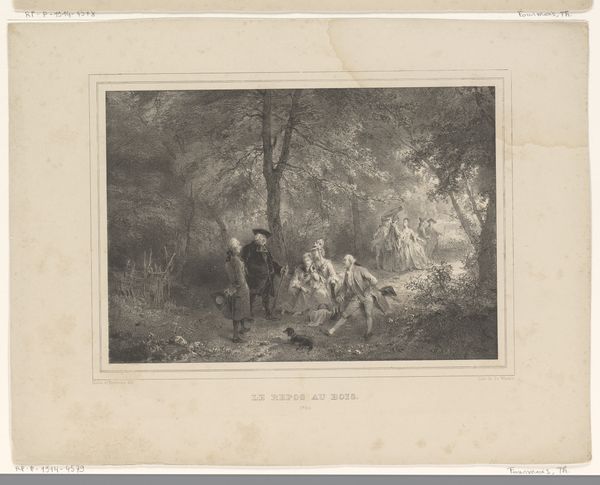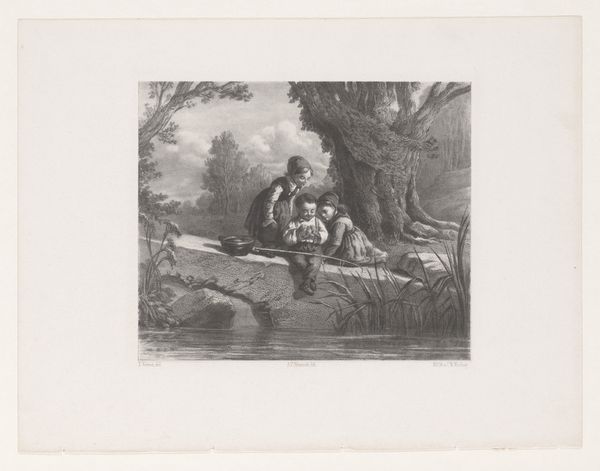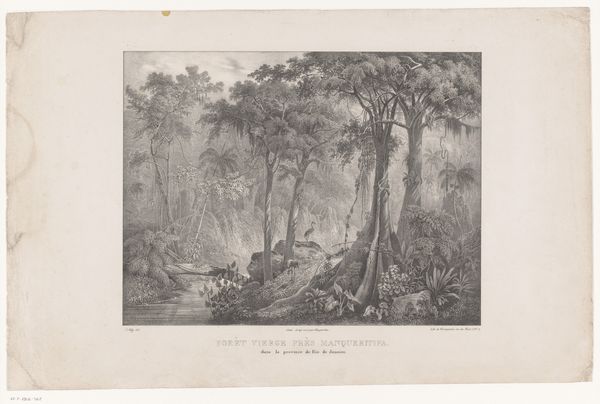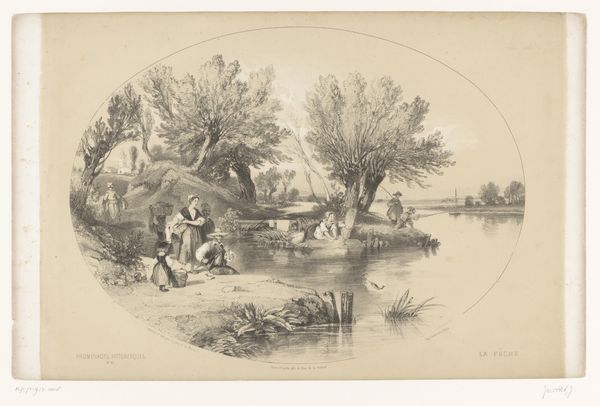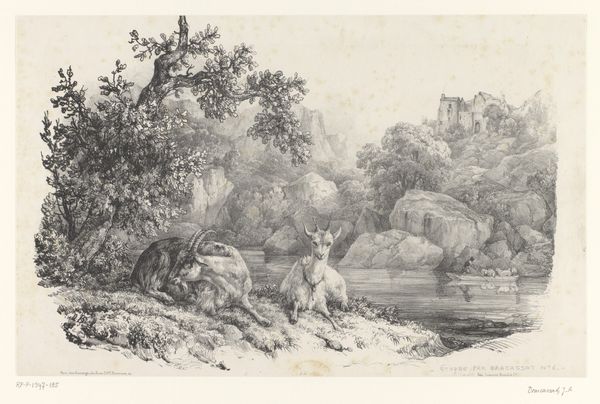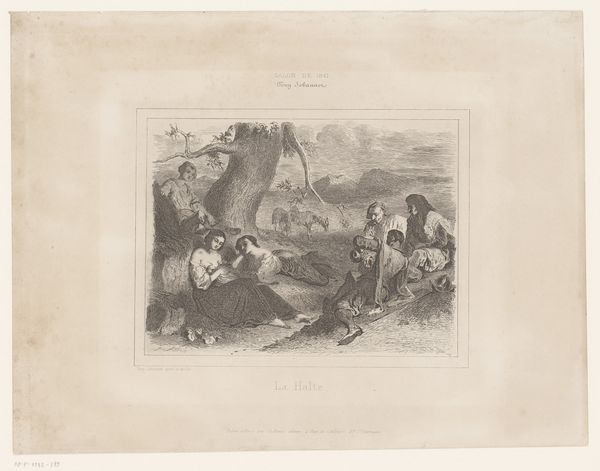
Capture of the Daughters of Boone and Callaway by the Cherokee and Shawnee 1852 - 1899
0:00
0:00
Dimensions: height 157 mm, width 215 mm
Copyright: Rijks Museum: Open Domain
Editor: This engraving, "Capture of the Daughters of Boone and Callaway by the Cherokee and Shawnee," dating from 1852 to 1899 and credited to Fitz-Edward Jones, is intensely dramatic. What really strikes me is the composition; there’s so much activity crammed into the scene, almost a chaotic energy. What do you make of it? Curator: It's fascinating to consider this image through a materialist lens. The very act of creating this engraving, the labor involved, and its intended consumption reveal a lot about 19th-century societal values and the romanticized, yet often distorted, view of the frontier. Consider the material production itself; engravings were relatively accessible. How might this accessibility shape its impact and the distribution of this narrative? Editor: That’s interesting. So you’re saying the *process* of engraving is key? I hadn't thought about that. It speaks to a broader audience, maybe with different social backgrounds? Curator: Exactly. And think about what is being depicted here – the frontier encounter. Who is its intended audience and what preconceptions are they bringing with them? Also, examine the contrast in visual labour -- look at the rendering of clothing on the 'captured' versus the weaponry shown with such meticulous detail on those who hold them captive. What does that materiality express? Editor: I see what you mean! The clothing looks almost generically rendered, like a stereotype of victimhood, while the weapons get the focused treatment. It feels like the tools of colonial violence get the most, perhaps unintended, glorification? Curator: Precisely. So, considering its widespread production through engraving, its focus, and this stark visual emphasis through detailed object work, we're seeing more than a historical depiction; we're witnessing the materialization of cultural biases circulating during that period. It raises questions about representation, power, and consumption. Editor: Wow, I never would have considered analyzing this piece through the lens of material production and distribution like this. Curator: Paying close attention to how something is made and circulated reveals profound societal currents that a quick aesthetic evaluation could easily overlook.
Comments
No comments
Be the first to comment and join the conversation on the ultimate creative platform.
